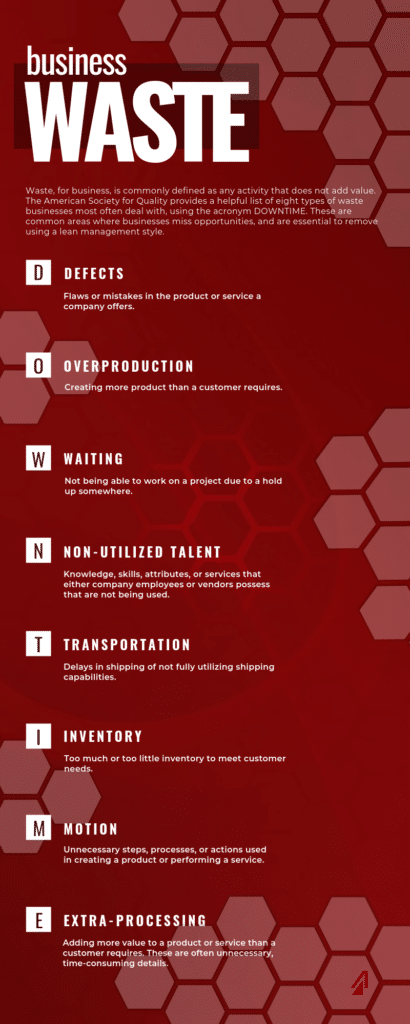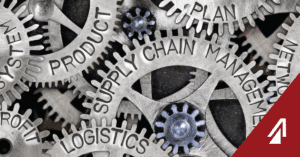A lean supply chain operates with lower levels of waste and aims to be proactive in identifying inefficiencies. Knowing where common issues can occur provides an increased awareness when determining the exact material flow process and can help eliminate the possibility of waste occurrences. A supply chain can experience several types of waste that can inhibit the overall performance. Evaluating waste as it occurs and determining the root cause pushes for process refinement and future waste elimination.
Each waste, while it is an issue by itself, can cause adverse effects further in the supply chain process. Having the knowledge to identifying the original waste at its start can save time diagnosing the issues. See where most supply chains are inefficient in the graphic below.




